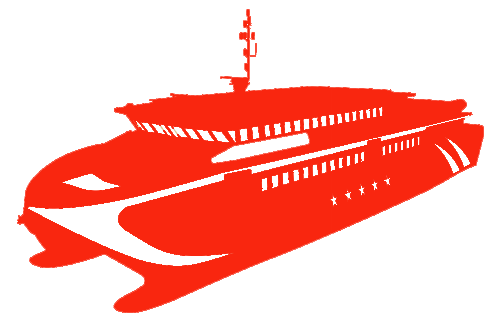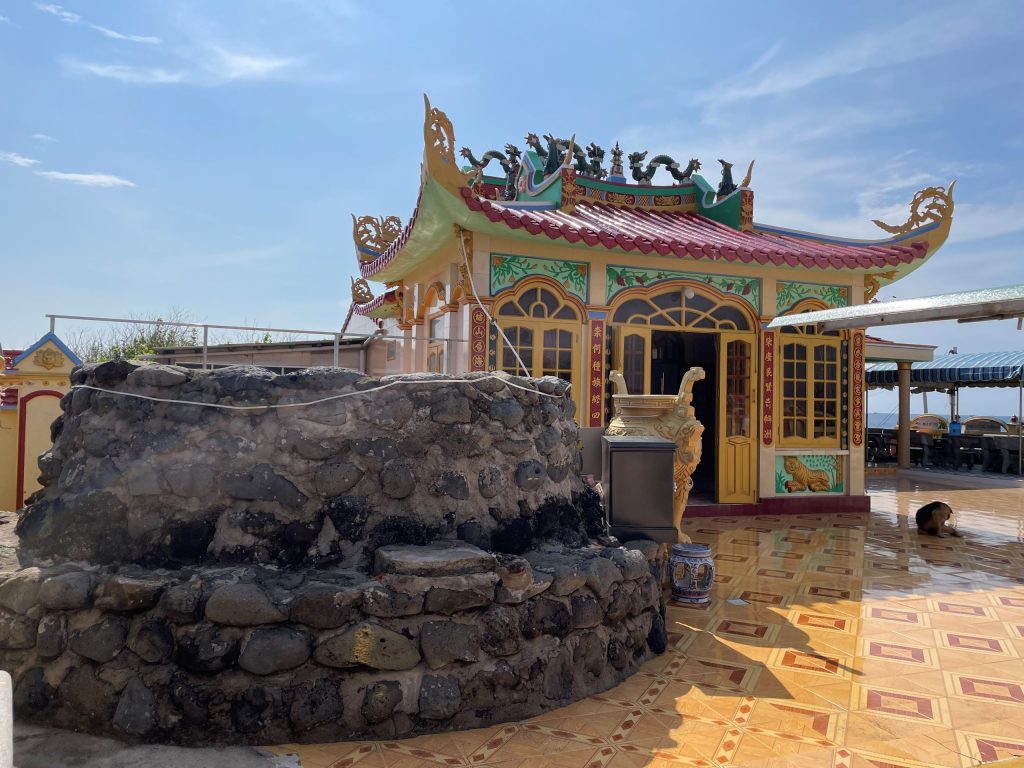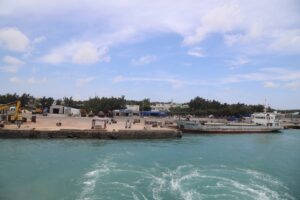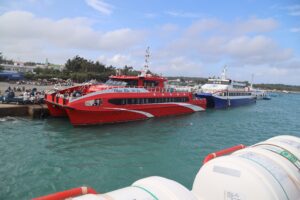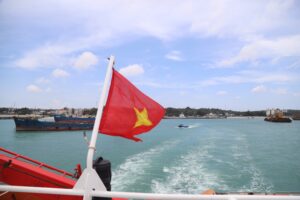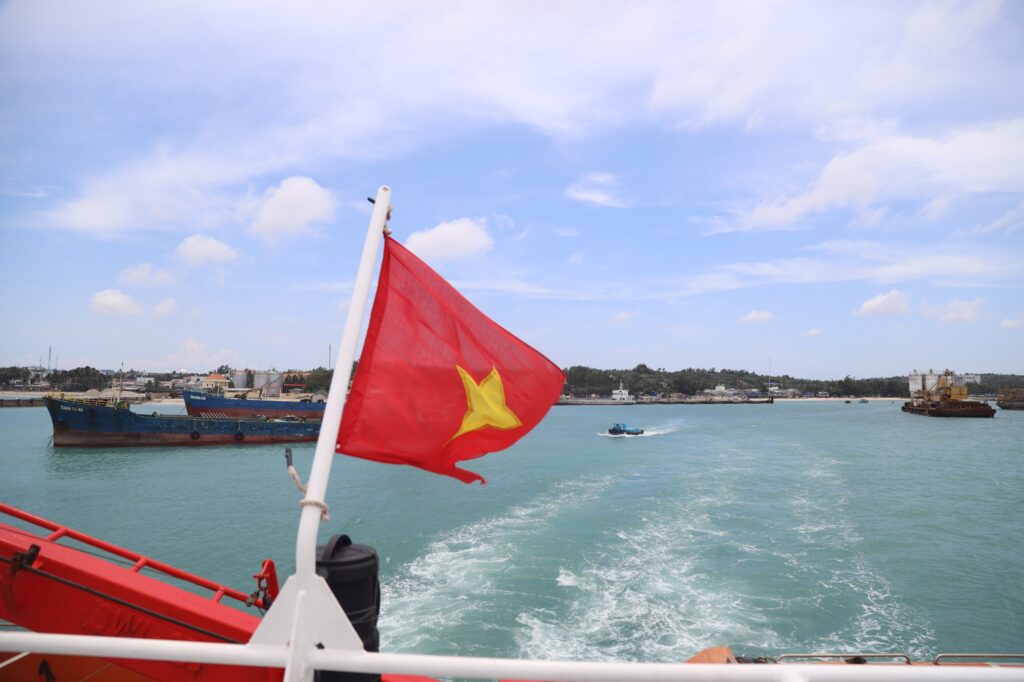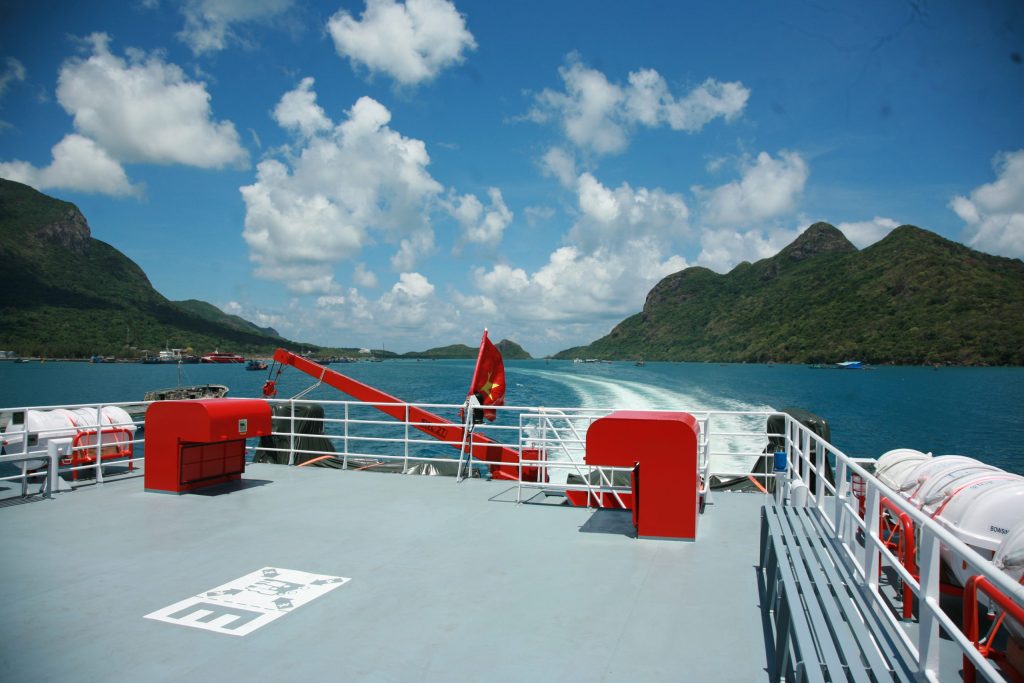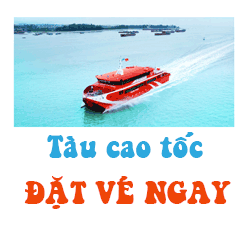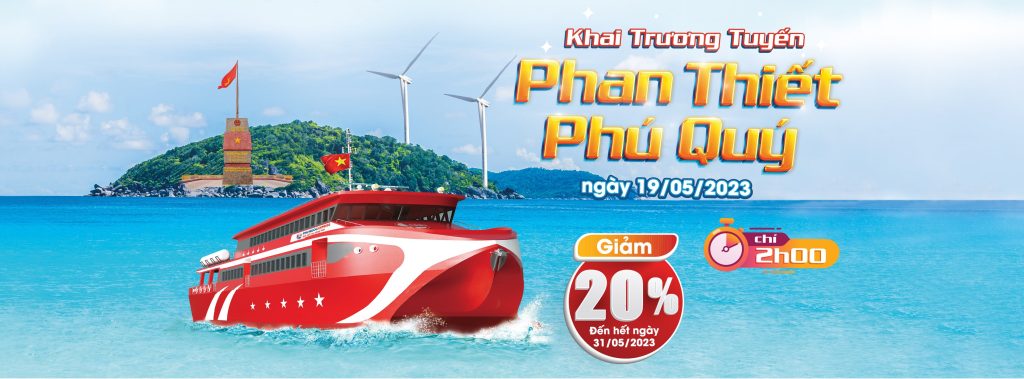The occupational belief system on Phú Quý Island is considered more diverse than in other island districts of Vietnam, encompassing agricultural beliefs, worship of ancestral craft deities (patron saints of professions), whale worship (also known as “Ông” or the Whale God), and the worship of the God of Wealth.
Village Tutelary God Worship
Among Vietnam’s folk beliefs, the worship of Thành Hoàng (village tutelary gods) is a familiar and deeply rooted tradition. These gods, who protect villages, may be human deities (historical figures recognized for their contributions, such as land developers, national heroes, or high-ranking officials honored posthumously by the king), or nature deities (associated with rivers, mountains, the four immortals, or legendary totemic figures). These deities are greatly revered and annually honored with offerings and ceremonies.
Under Vietnam’s feudal dynasties—particularly the Nguyễn dynasty—the state regulated the conferral of titles to each Thành Hoàng to affirm royal legitimacy.
On Phú Quý Island, the local people worship Bổn Cảnh Thành Hoàng (Tutelary God of the Locality) in their communal village halls (đình). Historical records show that in 1839, during the Minh Mạng reign, the emperor ordered that each locality establish a shrine to honor its Bổn Cảnh Thành Hoàng—a deity who serves as a guardian of the region. These deities are not necessarily based on specific individuals with clear historical backgrounds. Instead, they were considered abstract bureaucratic agents assigned by the king to manage a community. Most of the time, no statue is placed in the shrine—only the character “Thần” (神) is worshipped.
Worship of the Nam Hải Whale God
The Nam Hải Whale God worship reflects the strong belief of seafarers in a protective deity who aids them at sea. Legend has it that during his years of fleeing, Emperor Gia Long (Nguyễn Ánh) was once saved by a whale during a storm at sea. After ascending the throne, he honored the whale as Thần Nam Hải (God of the South Sea), with the ceremonial title:
“Nam Hải Cự Tộc Ngọc Lân Từ Tế Chương Linh Trợ Tín Trừng Trạm Chi Thần.”
A folk tale further recounts that Avalokitesvara Bodhisattva (Quan Thế Âm), while passing over the South Sea, witnessed sentient beings perishing in storms. Moved with compassion, she tore her cloak into many pieces and cast them into the sea, magically transforming them into whales. The bones of these creatures were said to be made from elephant bones, giving them strength to rescue people in distress—hence, the reverence for whales as sacred beings appearing during maritime emergencies.
The Đại Nam Nhất Thống Chí, a historical record by the Nguyễn Dynasty’s royal historians, describes the whale as:
“Cá Ông (Whale) is a sacred fish, round-headed, with a blowhole on its forehead, black and smooth without scales, with a shrimp-like tail; gentle by nature and often rescues people. During the Minh Mạng era, it was named Nhân Ngư (Human Fish), and during Tự Đức’s reign, it was renamed Đức Ngư (Virtuous Fish).” [18:406]
The belief in whale worship is particularly prevalent in southern coastal regions, under the notion of “Northern Sea Fish – Southern Sea God.” In the Gia Định Thành Thông Chí, it’s noted:
“Only in the waters from Linh Giang (Gianh River) to Hà Tiên does the whale miraculously rescue people, unlike other seas. Perhaps the sacred southern seas and mountains provide divine aid to protect our people.”
If a whale died and floated ashore, the locals would collect donations for a proper funeral, selecting a respected elder to lead the rites. They buried the whale with care and built a shrine beside the grave. Communities that buried whales were believed to receive blessings, and even areas without such burials would still build shrines to honor them.
According to Ngô Đức Thịnh in Beliefs and Cultural Practices in Vietnam,
“Fisherfolk, due to the perils of their marine livelihood, developed complex rituals and customs—most prominently the whale worship tradition, with sacred objects, myths, and festivals. Shrines from Quảng Bình to the Southern provinces were built to house whale bones (Ngọc Cốt), and ceremonies like funerals and the annual Nghinh Ông Festival were held.” [19:31–32]
Phú Quý Island, in Bình Thuận Province, currently has the highest number of whale worship shrines compared to other districts nationwide. With a community deeply tied to the sea, islanders strongly believe in the divine protection of Ông Nam Hải and hold numerous annual Nghinh Ông festivals to show reverence and pray for abundant fish and safe voyages.
Worship of Master Sài Nại
According to legend, Master Sài Nại was a Chinese merchant in the 16th century. He was also a skilled physician and geomancer, often traveling by sea to trade with other countries. On one journey, he visited Phú Quý Island and recognized its sacred geography. At the time, Princess Bàn Tranh and her followers had already settled there.
Master Sài Nại formed a sibling-like bond with the Princess. During his visits, he treated illnesses and helped the island’s poor. He expressed a wish to have his ashes buried on the island—believing it to be a spiritual land with a “dragon vein.”
After his death on the 4th day of the 4th lunar month, a fleet from the north secretly arrived at night, conducted a ritual, and buried his ashes on the island. By morning, locals were surprised to find the area now known as Doi Thầy (Thầy Cape, Đông Hải Hamlet, Long Hải Commune) filled with incense, fruit, chickens, pigs, tea, and wine.
The news spread quickly, and many came to see. Recognizing the significance of the event, islanders built a cylindrical stone tomb and called it Thầy’s Grave.
Locals believe Master Sài Nại became a divine spirit after death. Legend tells of three thunderclaps and a bright halo appearing at his passing—considered his manifestation. Islanders believe he protects them, especially during storms or wartime. Many have claimed to be saved through his spiritual intervention.
Worship of the White Horse Eunuch (Bạch Mã Thái Giám)
The deity Bạch Mã Thái Giám is worshipped as a guardian of seafaring traders. This belief stems from an Indian legend about Balaha, the divine white horse:
Eight hundred merchants, lost at sea, arrived on an island of man-eating women. Rather than being killed, they were forced to marry and live on the island. Longing for home, they prayed to the Buddha for salvation. Compassionately, the Buddha transformed into a white horse that flew them back across the sea. However, those who looked back—longing for what they left—fell into the sea. Only one, who heeded the Buddha’s warning, survived and eventually became a king of India.
In Mahayana Buddhism, Avalokitesvara Bodhisattva (Quan Âm) can manifest in many forms—male, female, or non-gendered. One such form is Mã Đầu La Sát (Horse-Head Rakshasa)—a figure with a human body and horse head.
Cultural scholar Huỳnh Ngọc Trảng wrote:
“Mã Đầu La Sát is a manifestation of Avalokitesvara with a horse’s head. A unique aspect of this bodhisattva in Mahayana Buddhism is their ability to transcend gender—manifesting as either male or female.” [18:133]
Thus, the “White Horse” refers to the deity’s form, while the title “Thái Giám” (Eunuch) reflects the deity’s gender-transcending manifestation in local belief.
The Nguyễn Dynasty honored this deity with the title:
“Dương Uy Ngự Vũ Bảo Chướng Kiện Thuận Hòa Nhu Hàm Quang Thượng Đẳng Thần”, a title reserved for high-ranking protective spirits.
On Phú Quý Island, the White Horse Eunuch is venerated in local temples. Each year, islanders hold rituals in the deity’s honor, praying for blessings in trade, good health, and peace.


